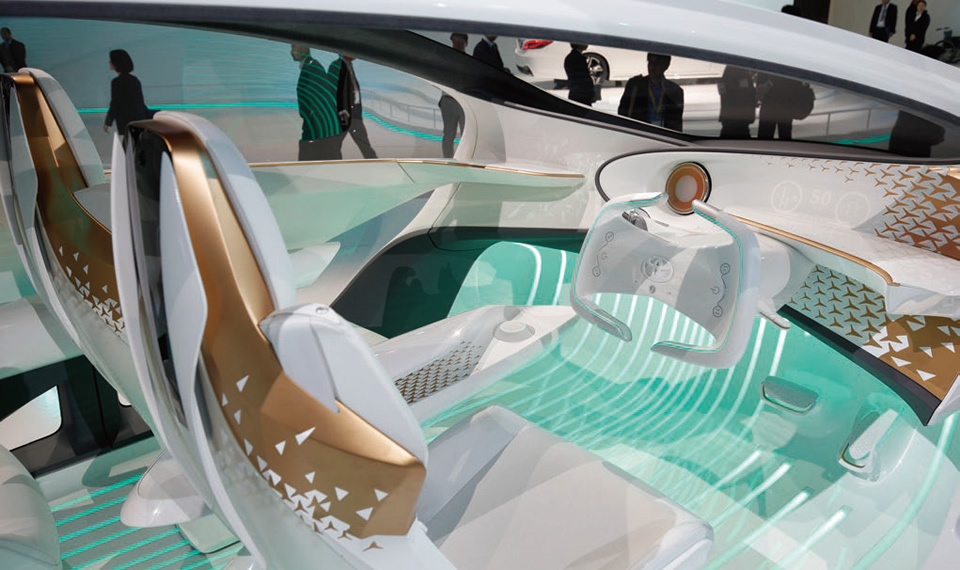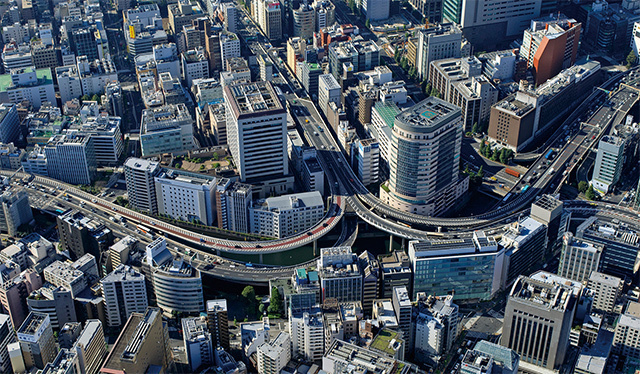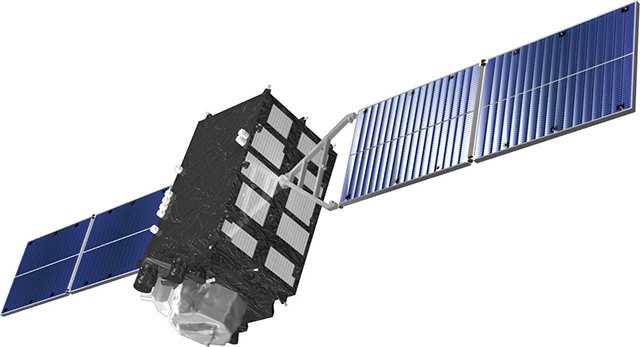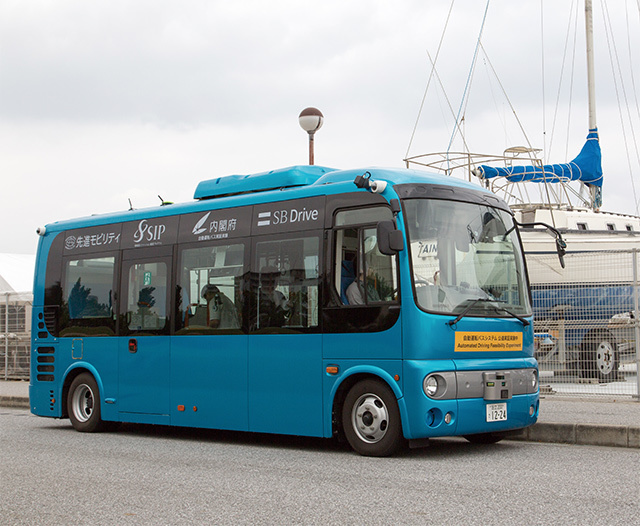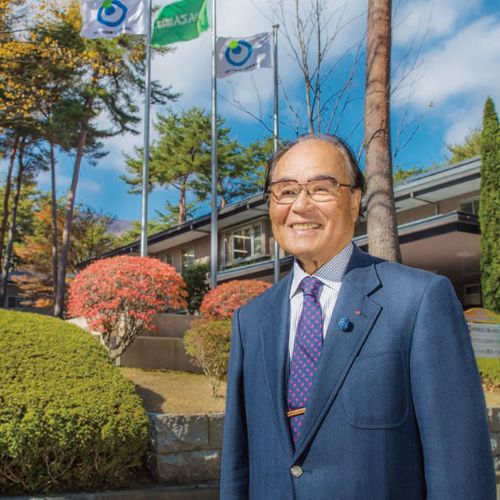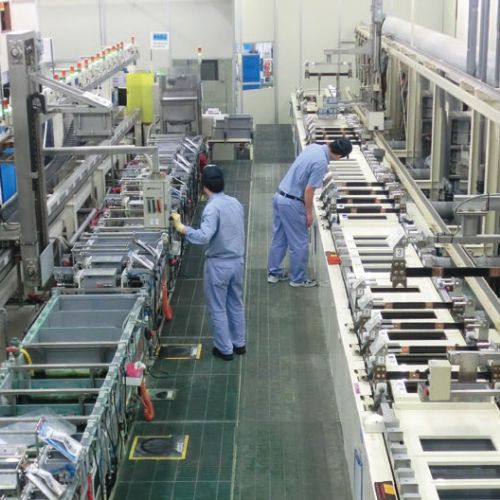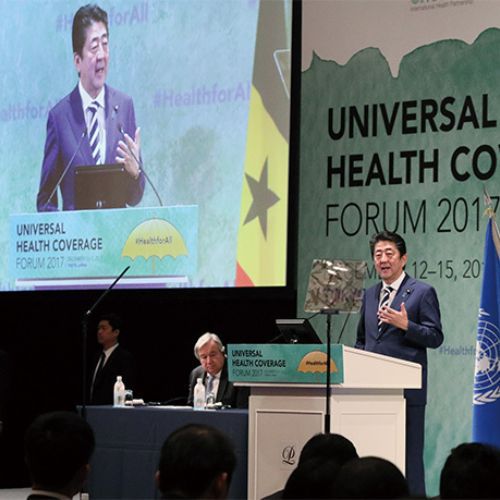Japan is making great efforts to provide an ideal environment for developing automated driving systems. In November 2015, Prime Minister Abe announced, “We want to ensure that it becomes possible to offer driverless mobility services and automated driving on our highways for the 2020 Olympic and Paralympic Games. For this reason we are determined to prepare the necessary infrastructure and frameworks, including the human resources to carry out final testing.” In September 2017, changes to the National Strategic Special Zones Law went into effect as part of a concerted effort to support commercial activities focused on demonstrating the viability of automated driving systems. The National Police Agency has also published guidelines concerning the testing of automated vehicles on public roads. Although certain conditions must still be fulfilled, it is now possible to test automated driving at any time without a permit.
Japan’s Metropolitan Expressway has many curves and junctions, demanding different capabilities from automated driving technology than most expressways in Europe and the U.S.
The Cross-ministerial Strategic Innovation Promotion Program (SIP) facilitates industry-academia-government cooperation regarding the implementation of advanced automated driving systems. Under its auspices, largescale operational field testing will be conducted between October 2017 and March 2019. In addition to Japanese organizations, 21 foreign ones, including automotive parts manufacturers and universities, are participating. Research and development is making progress under a diverse array of traffic environments, not only on central Tokyo’s Metropolitan Expressway and on the Shin-Tomei Expressway, but also throughout various regions of Japan.
Berthold Wolfram, President and CEO of German automotive parts manufacturer Continental Japan, which is participating in SIP’s large-scale field testing, explains, “In order to implement automated driving systems all over the world it is necessary to conduct research and development that takes into consideration the unique road and traffic conditions and regulations in each country. When it comes to the kind of automated driving features desired by drivers, for example, German customers are more interested in automated longdistance driving on the Autobahn, whereas in Japan there is more demand for automated stop-and-go driving in heavy traffic and for automated parking—we see local driving conditions reflected in customers’ needs. Our company is advancing many different forms of automated driving systems and Japan’s large-scale field testing will greatly benefit their development.”
Continental Japan’s CEO Berthold Wolfram recounts that “the license plate number of Japan’s test vehicles is ‘2020.’ We’re aiming to have self-driving vehicles on public roads by 2020, and in addition to participating in SIP’s driving tests, we’re also focusing on the development of improved sensor and brake systems.”
Wolfram particularly admires Japan’s leadership in supporting innovation. “The most pressing current concern is to include proper guidelines regarding automated driving into the existing legal framework. Japan not only has excellent researchers, but has been making great progress when it comes to providing the necessary coordination. SIP not only connects the private sector with governmental and academic organizations, but advances projects planned from basic research all the way to commercial application and encourages participation by foreign players. This shows that Japanese officials are serious about leading the world in the development and implementation of automated driving systems.”
SIP’s project is also a test case for the pursuit of open innovation. Cooperation between Japan and the rest of the world accelerates innovation, and Japan is working hard to lay the necessary groundwork.


























